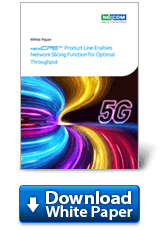nexCPE™ Product Line Enables Network Slicing Function for Optimal Throughput
Trend
Fixed Wireless Access (FWA) is one of the key technologies in the 5G Era to enable 5G services via remote access, featuring Enhanced Mobile Broadband (eMBB), Ultra-Reliable, Low-Latency Communications (uRLLC), and Massive Machine Type Communications (mMTC). Compared to traditional fixed broadband technologies, which require lying extensive cable infrastructure, FWA technology saves Communications Service Providers (CSPs) their CAPEX and OPEX in a significant scale.
As more and more CSPs launch their 5G services and the existing well-known advantages cannot be used as competitive differentiator anymore, CSPs have to find new innovative features besides high speeds and high reliability so they can win new customers and keep old ones. That is where network slicing comes into play. Even within one industry sector, different companies could set different attributes for internal and external data transmissions. Network slicing offers each company a tailored solution under a single physical IT framework but with multiple virtual network layers to leverage, allowing divided traffic flow into few autonomous groups and keeping different set of attributes for each group respectively. (Figure 1).
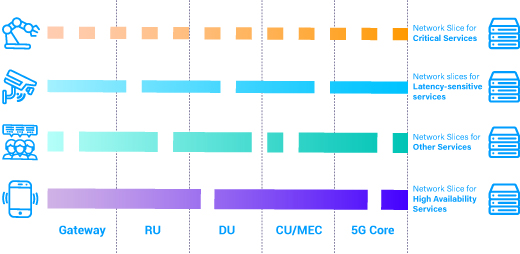
Figure 1. 5G Networking Slicing for Diversified Services.
The colorful spectrum in Figure 1 shows the composite of four logical networks under a shared physical infrastructure, in which each color represents a virtual, independent layer (sliced horizontally in network topology) that in itself operates to meet a specific set of service level requirements (SLR) pertaining to the application scenario. Whereas low latency tops the priority for vehicle telematics in transportation, high availability of services is key to sustain operations for enterprise and factories. On the other hand, emailing and web browsing in general, can be managed under ‘best effort’ domain as delay of a few seconds is not likely to create intolerable inconvenience to users. Here network slicing becomes a very efficient way to utilize network resources and creates innovative revenue.
Challenge
Desktop uCPE, available in the market now, features many essential functions, such as virtualization and SD-WAN, while some of them support wireless connectivity and some feature impressive port count with a combination of copper and fiber ports of different link speeds.
These uCPE boxes still can be deployed in 5G infrastructure, where network slicing services are provided by 5G-NR base station, but in this case the number of uCPE boxes should be equal to IoT devices count, as shown in Figure 2.
Further adding to the challenge, the dynamics of 5G services in each application scenario increase the complexity to optimize the solution. For example, appliance portfolio decision is not an easy task, given so many aspects of platform selection-switch functionality, 5G connectivity, sufficient computing capacity in terms of processor core count, etc. On the top of that, there is software consideration—the capability to support slicing and easy deployment.
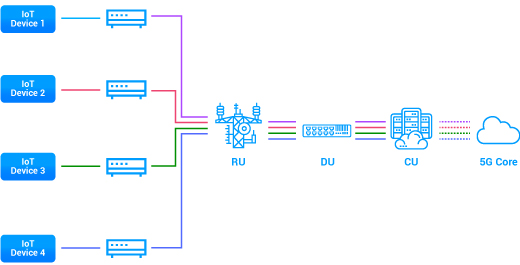
Figure 2. Networking Slicing with for diversified Services.
NEXCOM’s Solution
Understanding the importance of FWA advantages and to maximize 5G abilities, NEXCOM launched nexCPE™ product line. This line is designed to meet the requirements of future networks, including network infrastructure and multicore count to support more NVFs. nexCPE™ product line consists of 3 appliances: entry-level desktop appliance for SMBs applications, mid-range 1U rackmount for branch offices and high-end 1U rackmount for enterprise uses.
The first in the line-DFA 1163 Series has 3 SKUs, all powered by Intel Atom® C3000R processor and tailored for wireless broadband applications, including wireless gateway, security gateway and edge computing uCPE. Comparing to legacy uCPE, DFA 1163 meet the requirements of the 5G Era. This series offer 2 flavors of CPU with different core count, multiple I/O port types, port counts, and link speeds, with optional features including Wi-Fi 5/6, 4G LTE & 5G support, and optional PoE+ capabilities. SDN/NFV software stack can run on this whitebox for network virtualization and optimization. And most importantly, eight ports support Ethernet switch function, for network slicing.
In this test, DFA 1163A SKU has been chosen. As all models of nexCPE™ product line, this SKU is also based on FWA remote access to 5G services. To enable network slicing technology, DFA 1163A features powerful 8-core processor together with 8 LAN ports with Ethernet switch support. It was tested in lab-created 5G Standalone (SA) environment by O’Prueba Technology Inc., a spin-off from Networking Benchmarking Lab at NCTU in Taiwan. 5G SA environment conditions were generated by AMARI Callbox, which acts as 3GPP compliant gNodeB, EPC and 5GC and allows functional testing of NR, LTE, LTE-A, LTE-M and NB-IoT devices. Detailed test configuration described in Table 1.
TABLE 1. NETWORK SLICING TEST SETUP
| Items | Description | Items | Description |
|---|---|---|---|
| System | DFA 1163A | 5G Sub 6G module | Thales MV31-W |
| CPU | C3758R, 8 cores | Test Equipment | AMARI Callbox |
| Memory | 64 GB | Test Tool | Scapy 2.3.2 |
| OS | Ubuntu 18.04.5 LTS 5.4.53 | Test Server | NSA 7150 |
Testing topology is shown on Figure 3. Four IoT devices were connected to DFA 1163A uCPE box via wireless broadband. DFA 1163A was forwarding data traffic to AMARI Callbox, representing gNodeB with UPF for package forwarding (IP, TCP UDP), and backwards.
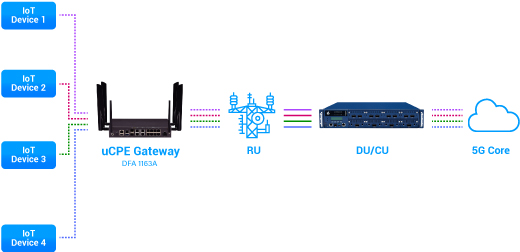
Figure 3. Network Slicing Test Topology in 5G SA Network Infrastructure with Professional uCPE.
For the test, four different types of IoT devices have been chosen each with corresponding priority level. For details, please refer to the Table 2.
TABLE 2. IOT DEVICES CONNECTED TO DFA 1163A FOR NETWORK SLICING TEST
| Device | IP address | VLAN | Characteristics | Application examples |
|---|---|---|---|---|
| IoT device 1 | 192.168.1.1 | VLAN 200 | Mid priority, latency sensitive device | -IP camera -IIoT sensor |
| IoT device 2 | 192.168.2.2 | VLAN 300 | High priority, critical operations | -Robotic arm -Autonomous vehicle |
| IoT device 3 | 192.168.3.3 | VLAN 400 | Low priority, other services | -IP gateway -Gaming |
| IoT device 4 | 192.168.4.4 | VLAN 500 | Lowe priority, high availability services | -Mobile phone -IoT sensor |
Each device had their own unique IP address, which bypassed through DFA 1163A to Amari Callbox (covered RU, DU and CU stages) and onward to the Data Center. When data was received by server, the same IP addresses were captured, which confirmed that network slicing function had been enabled. Attained results confirmed that DFA 1163A is ready to provide network slicing services in 5G Non-Standalone (NSA) networks.
Conclusion
Network slicing is relatively new technology to experience 5G end-toend services. All appliances of nexCPE™ product line are equipped with a rich set of features to open up all 5G advantages for a wide range applications and use cases to be deployed in 5G NSA and SA networks.
Testing results proves that DFA 1163A not only offers agility for multiple connectivity, high expandability but also building stable connections with ability to set up prioritizes. As a professional uCPE appliance, a single appliance is able to cover few IoT devicesat the same time, while mainstream uCPE can cover only one IoT device per appliance. nexCPE™ series offers a comprehensive solution, with each model targeting specific challenges in 5G transition, for best practices. All appliances of nexCPE™ line could be used together in one network infrastructure, but on different levels. While DFA 1163 is designed for on premise application for SMBs, FTA 1170 is a great multipurpose appliance for enterprises and FTA 5180 is designed for access central office needs. The combo outperforms in functionality and quality of service beyond other one-size-fitsall solutions, making an essential option for scaling and sustaining 5G enterprise networks.
The entire nexCPE™ line is powered by Intel processors, with FTA 5180 housing Next Gen Intel® Xeon® D processor, while FTA 1170 and DFA 1163 Series are backed by Intel Atom® processors to fit a generous variety of scenarios across enterprises and SMBs. Built with the latest technologies to maximize the resource pool for virtual network deployment, nexCPE™ series empowers IT professionals to execute extensive application scenarios and use cases, with a comprehensive coverage for both public and private 5G networks.
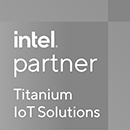
- Related Links:
- Achieve Faster AI Insights with NEXCOM FTA 5190 and Xeon® 6 SoC
- NEXCOM Drives Edge AI, Dual 5G, and OT Security Innovation at CommunicAsia 2025
- Browse Other News:
- Urban PET Recycling Reinvented Sustainable Solutions Powered by NDiS B561
- AIEdge-X®80 Leaps Ahead: Power Up TOPS Performance with NVIDIA® Jetson™ Super Mode
- All White Papers News

